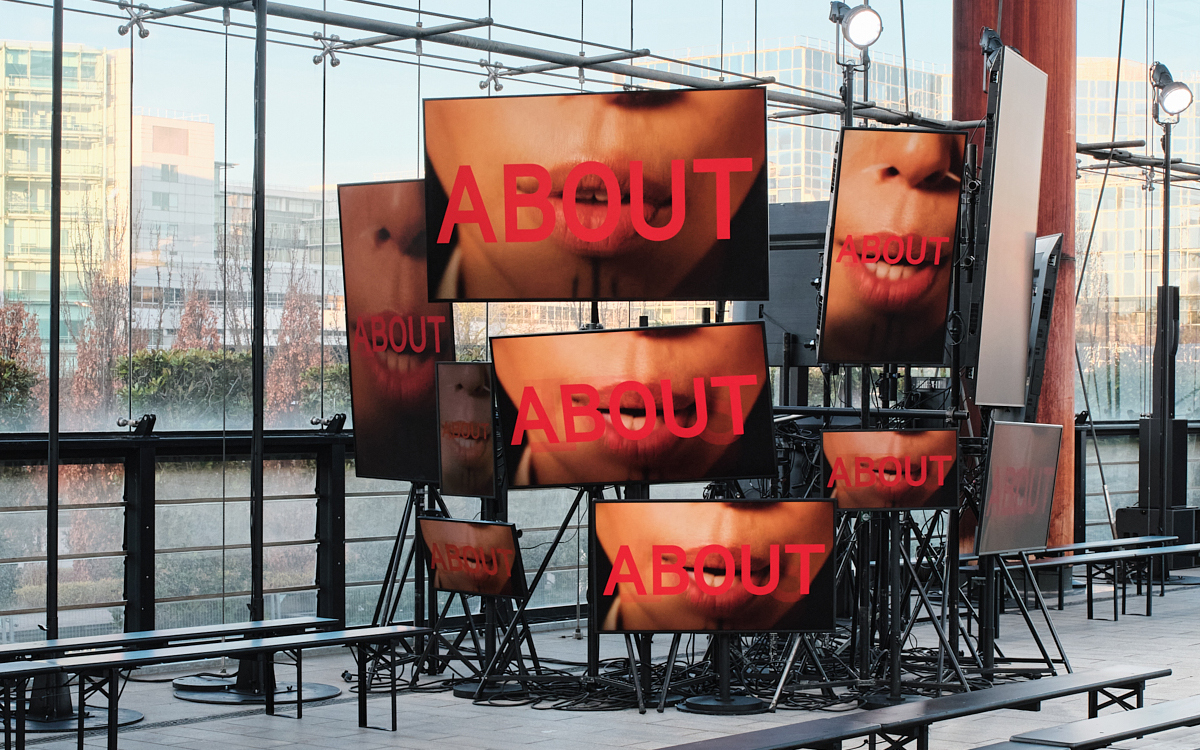What do BMW and Stella McCartney have in common? They both have recently shown new ways of digital storytelling. As overwhelmingly large and bright is becoming the new normal, intricate and intelligent is becoming more alluring.
I love when tech meets design items – whether it’s fashion or whether it’s cars. When intertwined in the right way, tech enhanced design signifies ultimate luxury. That’s why I rummaged through footage of Paris Fashion Week last week, to see how designers implement digital signage to create a vibrant setting for their latest ready-to-wear pieces.
When I browsed the different runway settings, I expected at least one of the designers to employ large LED walls as a backdrop. Well, none of them did. Instead, I found British designer Stella McCartney employ a much more subtly-engaging way of digital storytelling. She used a composition of different sized LCD screens to convey “a message of mother earth,” which her collection based on sustainably sourced material is supposed to send.
Sustainability – that’s the message brands want to send nowadays. Luxury fashion brands most of all, as they are the ones that have the image of being forward-thinking and future-oriented. And a sustainable message is indispensable for this image. Do large LED walls really feed into this message? Maybe – but only if integrated in the right way. Because digital storytelling is changing. It’s becoming less “in your face” and more intricate, as exemplified by Stella McCartney:
That’s not to say we’re past big LED walls – I think we’re just past the need to place them everywhere. And that’s also the story we hear from most digital signage integrators. Some verticals and some regions, like the Middle East, are still big fans of massive installations. Nita Odedra from Dubai-based Blue Rhine Industries for example always speaks about the big appetite for large immersive installations people currently have in that region.
But looking at pop-culture at a larger scope, the trend of creating immersion through overwhelmingly large and bright screens may have already peaked in the opening of Las Vegas Sphere last year and is now slowly dwindling.
In the meantime, energy-efficient technologies are becoming more chic by the day. Slowenian e-paper display manufacturer Visionect, for instance, has found a way to make black-and-white content look appealing through a clean frame and magnetic mounting.
Speaking of e-paper, BMW just introduced its latest limited art car model, for which the automotive designers have used E Ink technology the past three years. The result is a car completely wrapped in e-paper displaying patterns created by a South African artist that are also able to change colors:
How much does size really matter?
As smaller screen sizes are becoming more alluring in digital storytelling, small business that have long dominated the digital signage industry are struggling to find their place. There are, however, still particular areas where small, specialized integrators are superior to the large IT and ProAV giants that have formed in recent years. invidis expert Florian Rotberg dug deep to identify what these areas are:
THE event where small and big players meet
Trends in storytelling and shifts in the market – these are exactly the things we are going to decipher in May at Digital Signage Summit Europe (DSSE), the flagship version of our conference series that we organize in a joint venture with ISE. Registration finally opened this week. If you want to benefit from the 30 percent early bird discount, go secure your ticket now. There are also accomodation packages available, for the first time ever. Read more about the conference here:
I hope to actually see many of you in person at DSSE. Before the conference, however, there will be 10 more editions of invidis confidential to keep you updated.
Talk to you next week,
Antonia Hamberger

